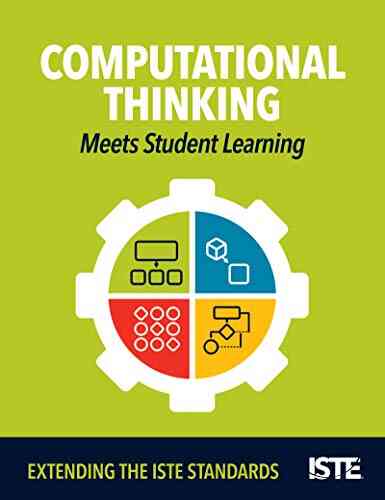Extending the ISTE Standards: Empowering Students in the Digital Age


As technology continues to evolve and reshape the way we live, learn, and work, it's essential for educational institutions to adapt and provide students with the necessary skills to thrive in the digital age. The International Society for Technology in Education (ISTE) is a leader in promoting the effective integration of technology in education through their widely recognized ISTE Standards. These standards provide a framework to guide educators in leveraging technology to enhance learning experiences and prepare students for the future.
While the ISTE Standards are comprehensive and powerful in their current form, there is a growing need to extend and refine them to keep up with the changing educational landscape. In this article, we will explore the importance of extending the ISTE Standards and how it can further empower students to become successful digital citizens.
The Need for Extension
The ISTE Standards have been influential in shaping technology-integrated education around the world. They have provided a set of guidelines that promote critical thinking, collaboration, creativity, and communication in the digital realm. However, as technology advances rapidly, new challenges and opportunities arise that are not explicitly addressed by the existing standards.
4.7 out of 5
| Language | : | English |
| File size | : | 1550 KB |
| Text-to-Speech | : | Enabled |
| Screen Reader | : | Supported |
| Enhanced typesetting | : | Enabled |
| Word Wise | : | Enabled |
| Print length | : | 21 pages |
One area where the ISTE Standards can be extended is in the realm of data literacy. With the proliferation of big data, students need to develop the skills to analyze, interpret, and make informed decisions based on data. Extending the ISTE Standards to include data literacy can equip students with the ability to navigate and make sense of the vast amount of information available to them.
Another important aspect to consider is the ethical use of technology. As students engage with digital tools and platforms, they must learn to be responsible digital citizens who respect the privacy and rights of others. Extending the ISTE Standards to explicitly incorporate digital ethics can guide students in making ethical decisions and understanding the consequences of their online actions.
Empowering Students with Extended Standards

Extending the ISTE Standards not only addresses the emerging needs of the digital age but also empowers students to take ownership of their learning and future. By integrating new dimensions into the standards, educators can foster a learning environment that encourages students to explore, innovate, and solve real-world problems.
One area where extending the ISTE Standards can make a significant impact is in computational thinking. Adding computational thinking as a foundational skill within the standards can enable students to approach complex problems analytically, break them down into smaller parts, and develop effective algorithmic solutions. This skillset is becoming increasingly relevant in the digital age, where automation and artificial intelligence play a significant role.
Additionally, incorporating media literacy within the extended standards allows students to critically evaluate and create digital media. With the rise of fake news and misinformation, equipping students with the ability to discern credible sources, analyze media messages, and produce meaningful content contributes to their digital citizenship and prepares them for a media-saturated world.
Building a Comprehensive Approach
Extending the ISTE Standards is not about reinventing the wheel. It is about building upon the strong foundation that the existing standards provide. By identifying and incorporating additional dimensions, the extended standards can create a comprehensive approach to preparing students for the digital age.
An area that can benefit from extension is global competence. In an increasingly interconnected world, students need to develop an understanding and appreciation for different cultures, perspectives, and global challenges. By integrating global competence into the extended ISTE Standards, educators can promote empathy, cultural awareness, and collaboration on a global scale.
Another dimension that can be extended is entrepreneurship and innovation. With technology creating new possibilities, students should be encouraged to embrace an entrepreneurial mindset and explore innovative solutions to societal problems. By equipping students with the skills to identify opportunities, take calculated risks, and cultivate creativity, the extended standards can foster a generation of entrepreneurs who can drive social and economic growth.
Extending the ISTE Standards is an essential process to ensure that educators are keeping up with the rapid pace of technological advancements and adequately preparing students for the digital age. By addressing emerging needs, such as data literacy, digital ethics, computational thinking, media literacy, global competence, and entrepreneurship, extended standards empower students to thrive in the digital world while fostering essential life skills.
As educational institutions strive to create a future-ready workforce, extending the ISTE Standards becomes an imperative task to enable students to navigate the vast opportunities and challenges presented by technology. By adopting extended standards, educators can ensure that students are equipped with the skills, mindset, and adaptability necessary to succeed in an ever-evolving digital landscape.
4.7 out of 5
| Language | : | English |
| File size | : | 1550 KB |
| Text-to-Speech | : | Enabled |
| Screen Reader | : | Supported |
| Enhanced typesetting | : | Enabled |
| Word Wise | : | Enabled |
| Print length | : | 21 pages |
This guide to the ISTE Standards for Educators: Computational Thinking Competencies will help educators incorporate CT in their curriculum to deepen student learning.
Computational thinking (CT) is a powerful ingredient for solving ambiguous, complex and open-ended problems by drawing on principles and practices central to computer science (CS). CT is at the core of CS and is a gateway to sparking student interest and confidence in learning CS.
The ISTE Standards for Educators: Computational Thinking Competencies were created to inspire every educator to add more computational thinking into their core problem-solving strategies. These competencies augment and home in on the competencies embedded in the ISTE Standards for Students and Educators.
The information in this guide will provide a framework and structure to build creative learning opportunities in CT and increase students’ ability to adapt to unfamiliar challenges, allowing for more success with innovative lesson plans.
This booklet contains:
- An overview of computer science and computational thinking and how they interact.
- Examples from across the subject/grade spectrum, including kindergarten reading, third grade math, sixth grade science and 10th grade social studies.
- Ideas for adding CT to lessons to enhance the knowledge base of students, letting them build the skills and confidence to persist when unexpected obstacles arise.
- Reflection questions and tips to help educators integrate CT into their lessons.
- Explanation of how the CT competencies complement the ISTE Standards for Educators.
This booklet will help educators understand the CT Competencies so they can effectively build CT into their curriculum, no matter what subject they teach.
Audience: K-12 educators
Do you want to contribute by writing guest posts on this blog?
Please contact us and send us a resume of previous articles that you have written.




















Light bulbAdvertise smarter! Our strategic ad space ensures maximum exposure. Reserve your spot today!

 Adrian WardThe Exchange: Indian Short Stories - Unveiling the Vibrant Tapestry of Indian...
Adrian WardThe Exchange: Indian Short Stories - Unveiling the Vibrant Tapestry of Indian...
 Vince HayesUnveiling the Magnificence of Virgil's Aeneid XII: Cambridge Greek And Latin...
Vince HayesUnveiling the Magnificence of Virgil's Aeneid XII: Cambridge Greek And Latin... Jacques BellFollow ·15.6k
Jacques BellFollow ·15.6k Ivan TurgenevFollow ·2.3k
Ivan TurgenevFollow ·2.3k W. Somerset MaughamFollow ·15.4k
W. Somerset MaughamFollow ·15.4k Damon HayesFollow ·10.8k
Damon HayesFollow ·10.8k Ronald SimmonsFollow ·10.2k
Ronald SimmonsFollow ·10.2k Beau CarterFollow ·3.6k
Beau CarterFollow ·3.6k Colt SimmonsFollow ·10.2k
Colt SimmonsFollow ·10.2k David BaldacciFollow ·12.7k
David BaldacciFollow ·12.7k

 Wesley Reed
Wesley ReedThe Ultimate Allergy Free Hypnotherapy Script: Say...
Are you tired of dealing with...

 Walter Simmons
Walter SimmonsAn Alliance Reforged Sentenced To War
War has always been a backdrop for...

 Jarrett Blair
Jarrett BlairThe Untold Story of Loss Guy Blaze: A Rollercoaster...
They say that loss is an inevitable part of...

 Matthew Ward
Matthew WardThe Ultimate Guide to Vegetable Gardening For Beginners:...
Are you interested in...

 Paulo Coelho
Paulo CoelhoUnrestricted Access: New And Classic Short Fiction
Are you passionate about literature?...

 Jamie Bell
Jamie BellSelf Hypnosis Made Easy - The Ultimate Guide to Unlocking...
: Do you find yourself...

 Caleb Carter
Caleb CarterThe Misery of Lives: Exploring the Intense Emotions in...
Anton Chekhov, famed Russian playwright and...

 Brandon Cox
Brandon CoxThe Untold Story of The Oliver Quintrell: A Journey...
The year was 1892. The maritime world was in...

 Juan Rulfo
Juan RulfoSpidey And His Amazing Friends Free Comic Free Comic Day...
Calling all Spidey fans! Get ready to...

 Cooper Bell
Cooper BellThe Seven Principles For Making Marriage Work: Key...
Marriage is a beautiful union...

 Eric Hayes
Eric HayesHomer And Classical Philology Glenn Mcgoldrick:...
When we think of ancient...
4.7 out of 5
| Language | : | English |
| File size | : | 1550 KB |
| Text-to-Speech | : | Enabled |
| Screen Reader | : | Supported |
| Enhanced typesetting | : | Enabled |
| Word Wise | : | Enabled |
| Print length | : | 21 pages |




















